On the day the joint retrospective of the Austrian Film Museum and the Viennale started Patrick Holzapfel sat down with curators Naum Kleiman and Artiom Sopin to discuss their curatorial approach and some highlights of the retrospective. In the middle of the conversation Barbara Wurm joined the group and also brought some cake. The retrospective is titled “Utopia and Correction. Soviet Cinema, 1926–1940 and 1956–1977” and runs from October 13 to November 30, 2017.
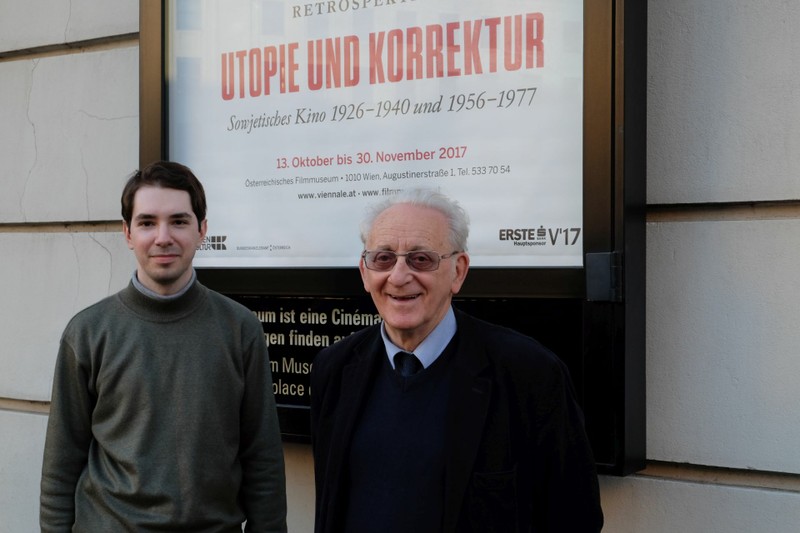
Patrick Holzapfel: As we talk to each other right before the retrospective is about to begin, we have to talk from the point of view of a person who is interested in the program as a whole and obviously not too much about details. I just haven’t seen enough films to do that.
Naum Kleiman: It is our duty to show films you haven’t seen yet.
P.H.: What immediately strikes the eye is the consistent pairing of films. The retrospective consists of fifteen doubles, always an utopia and a correction. Furthermore you two also represent two different generations, so I wonder how this idea of the “doubles“ came into being?
N.K.: We are not only from two different generations, we are also grandfather and grandson. There is a difference. As usual grandfather and grandson are closer than father and son. Viktor Shklovsky who was a great writer once wrote that you must live a long life in Russia because Russia is old and moves very quickly at the same time. And the revolution in Russia is not a river, it is a hedgehog. Here you can find what unites Artiom and me. The topic of revolution in Russia is not very clear, even to us. You have to rediscover it again and again. We try to do that. So many films wait in the shadows. There were so many generations establishing schemes. Artiom’s generation has to face all those different schemes that were put in place before. In the beginning of the 1920s it was the scheme of great hopes for the future. The revolution came more or less like a break in history. Then there were great hopes connected with the new economic policy. It was meant to be peaceful but then came Stalin and so on. It was a break again. Those developments are also always a break for art and its expectations. In the middle of all this existed an avant-garde movement. The public didn’t like it. They didn’t understand the language of the avant-garde. Before the revolution, a huge part of the population didn’t know how to read or write. There was another part of the population, that was maybe the most developed in Europe by that time. Of course, these contradictions lead to the tragedy of avant-garde. It is not only the historical evolution of tragedies, repressions and the cruelties of Stalinist power but also the tardiness of enlightenment in Russia that is important here. After that came the war. It was a very strange case by the way as during the war there was a liberation of the people. One needed them. Politics became much more liberal. The place of cinema in society was different. Suddenly it was like in the 1920s again. Cinema was helping the people, not the rulers. After the war there was another strange situation with the De-Stalinization. For the first time one was looking back at events from the 1920s and 1930s. The generation then was not Anti-Soviet or Anti-Socialist despite being very critical. There was skepticism but not all were in opposition. A new picture of history was formed and it also helped to rehabilitate the avant-garde. Yet, the new generations quickly understood that the rulers were incapable of really following their ideals. So after 1968 they became very bitter. This image of negation was the starting point for our retrospective. It can not only be the 1920s, the great utopian images, but also those of the Brezhnev Era. In my opinion the image of avant-garde that was created in the 1960s and 1970s in Russia was very strange. They created an image of stupid propaganda which, they said, only existed to suppress the people. This was just not true. Nevertheless I sense in this a rather normal contradiction between sons and fathers. The generation of Artiom, the one that came with or after Perestroika on the other hand, is much more open again to understand the revolution. Now we look at it more like the French Revolution. It has become history which allows us a new understanding of it. Thus there is a certain closeness of Artiom’s generation and mine. For us it is not a question if Eisenstein, Vertov or Dovzhenko are guilty. It is more about the struggle to convince people to believe and it is about the utopian crisis.

Patrick Holzapfel: Why then does the retrospective stop at the year 1977?
N.K.: One could maybe have stopped a bit later, around 1982. However, among the films produced later, especially during Perestroika, you can not find many masterpieces. There was a crisis in Soviet cinema, also caused by all those forbidden films and the censorship in general. Also emigration was a reason for this development. Moreover by the end of the 1980s cinema was not really concerned with the revolution but more with the present. On the other hand, in the time of Khrushchev, what happened was partly a revision and a continuation of the 1920s. There was one stream but two views of it. I don’t know if this dialogue is successful but I can tell you that it really was a dialogue. It is not only about revision and negation, it is a dialogue. We try to show it in the retrospective. Artiom Sopin: Concerning the cinema of the 1990s one has to say that it just doesn’t deal with utopias. The films don’t search for answers to questions that were raised in the 1920s. They are concerned with different topics. Film scholars of the 1970s and 1980s mostly hated the late years of the USSR. My generation is different because we have hope. We know and want to know about our heritage. Like my grandfather’s generation. It is our heritage. It is silly to ignore one’s heritage or to hate it due to political or ideological problems. Of course, many of those films produced in the 1920s and 1930s are ideological in many ways. So we need to find hidden plots, plots that tell us more about our heritage. We can find them in the films. They are not necessarily subversive but they exist. Those films were often made by good or even great directors. There is more than just superficial messages to them. They have different meanings even if they don’t clash with the main plot. There is always an official plot and a human plot. For example, you can have a historical social plot and a love story. Those films are linked with our history. To understand it we have to watch those films.
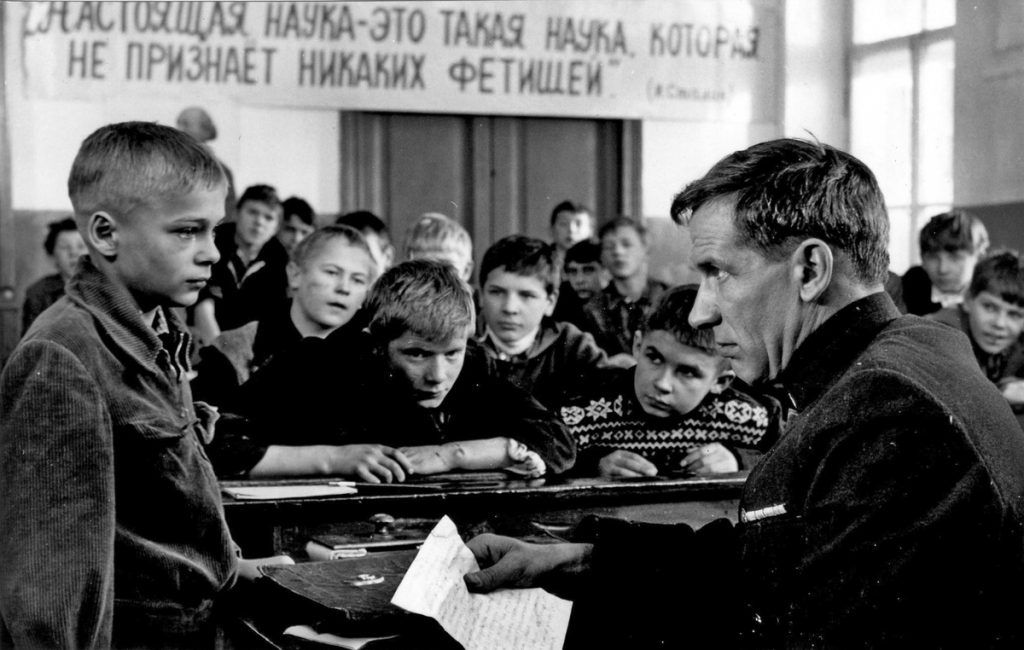
P.H.: Yet, there is an image or rather a cliché of Soviet Cinema I have in my mind and I think many share this. Especially when it comes to the 1920s. Of course, seeing a film is always something else and a filmmaker like Barnet is something very different from Eisenstein. But I think you know what I might refer to. I wonder if there were any films or aspects that really surprised you while researching and discussing this retrospective?
N.K.: It is a constant process. One reopens and rediscovers all the time. You also don’t know what Renaissance is when you see Raffael. There is so much more to discover. This is true for the individual artist as well as the time or movement as a whole. Lets take Barnet as an example. We always knew that he made some very good films like Okraina or his early comedies. We all had the feeling that we know Barnet at one point. But when he turned 90 our Cinematheque made the first complete retrospective of his work. We wanted to show absolutely everything. I called Gosfilmofond and asked them to send us all of Barnet’s films they have. We also wanted his unsuccessful films. We knew from a study I had made that he shot a film on dekulakization called The Thaw. I had never seen that film. When they send it to us we discovered a wonderful and very important work. It was a correction of our image of Barnet. They also showed for the first time Dark is the Night. It is a war film and the best Soviet thriller ever made. Our teachers never mentioned that film, it was an unknown work by then. One could go on forever with Barnet. His film A Good Lad is another example. When I was preparing an exhibition I called at the concerned archive and asked for some stills as I knew the film had disappeared and was forbidden immediately after it came out. Then they told me that they own a negative. I was shocked and I got on my knees to get them to restore the work. Barnet was 80 years old when his film was screened for the first time. We discovered a very strange film, a kind of fairy-tale. It is not bad. The case of Barnet shows that discovery never ends.
A.S.: In our program there are some films that are well known in Russia. Yet, the way they are known in is very limited. For example Carnival Night by Ėl’dar Rjazanov, a musical comedy with satirical elements which came out in 1956. Well, in those years it was very hard to predict if a film like this will have success or not, will be forbidden or not.
N.K.: I can tell you a bit about those years later. I know them very well.
A.S.: This film was lucky. It became very popular in the USSR. However, people only looked at it from the perspective of a musical comedy. It has its place in film history as a musical comedy. We included it in this program for a different reason. We put it in the context of the early Khrushchev Thaw-period, a time of De-Stalinization. It is not only a musical comedy, it is also a satire which describes the hopes of the early Thaw-period. In this regard the film is a twin brother of dramas of that period which were forbidden. So, by putting it into a historical context we hope to reveal its hidden meanings.
N.K.: There existed an official interpretation of that film. It was supposed to be the story of an old-fashioned bureaucrat versus the wonderful Soviet youth. Yet, we have to understand that film also in the same vein as other films about self-expressions of new generations. I am thinking of another musical, a film like Accordion by Igor’ Savčenko from 1934 because we might discover a very interesting connection between the two films. In singing there exists a natural hope and enthusiasm, not an official one. And again an old bureaucrat wants to stop the singing. In this case this is seen as a good thing. In the beginning of the 1930s the rulers don’t want the people to sing. I am pretty sure that Rjazanov hadn’t seen that film. Nevertheless he tells a very similar story but this time it is a story of liberation.
Barbara Wurm: You wanted to tell more about the situation of 1956?
N.K.: Well, that year was a shock. It was in the beginning of the year that there was a peculiar speech by Khrushchev at a closed session of the Twentieth Party Congress. Actually, nobody new what that speech was as the text was not available or heard publicly at first. It was just the term De-Stalinization that everybody talked about. Khrushchev understood that the members of the Central Committee would try to destroy him, so he turned to the people. I remember how it was when in April or May we listend to a censored version of the text. Even if it was censored, it was a shock. I lived in exile in Siberia with my parents. Naturally, I was not very enthusiastic about Socialism. I knew there were crimes but I didn’t know how many victims there really were. The cruelty of the Stalinist regime was unknown to us. So when we were listening to the speech, it was a shock. I remember the silence that followed it. I was studying Mathematics by then. There was silence everywhere. Nobody spoke after this three hour long speech. On the next day the whole university was in a murmuring uproar. Everybody was talking about it. In June I left Mathematics in order to study cinema. There you have another story of liberation. The first film they showed us in cinema studies on the very first day was The Forty-First by Grigori Chukhrai. I still remember that cry in the audience that was more like a relieve. It was like an ecstasy. One understood that the human side of the conflict is not less important than the revolutionary duty. These thoughts were brought to us during this time. There was a great sense of revolt, some of our students were also arrested, there was the Hungarian Revolution. Of course, the state had something against this. By September 1956 the situation completely changed. So, by then nobody could know what would happen to a film like Carnival Night. We know how The Tight Knot by Michail Švejcer was forbidden. It was the lightness of comedy that made Carnival Night pass the censors, I think.
A.S.: Yes, and in the end there is a compromise.
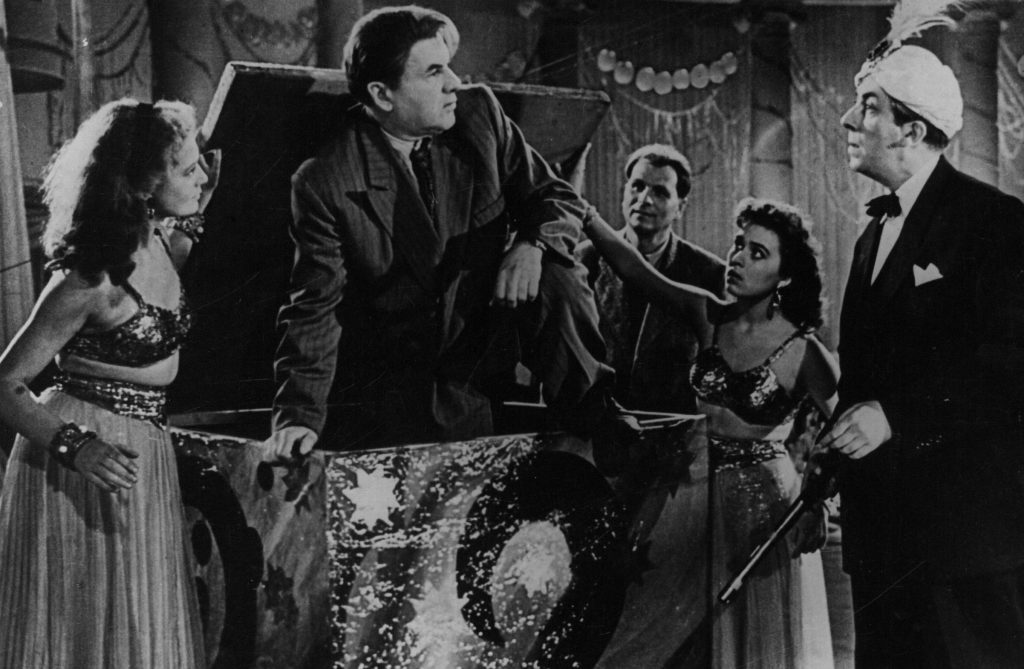
P.H.: You always stress the aspects freedom and liberation but then there is also always something that is in the shadows or was forbidden. Would you agree that this is also a retrospective on censorship? How important is it for you as curators to find those forbidden treasures?
N.K.: In my opinion we have to liberate ourselves. We can not wait for permissions all the time. (laughter) First of all you have to understand that you have your own opinion. You have to see films again and again and be open for it as each decade brings new interpretations of what has been. I have been studying Eisenstein all my life. Yet, my conception of a film like The General Line constantly changes. I am still not sure if I discovered all aspects of that film. It is full of metaphors. Moreover in the beginning we didn’t know too much about the political context. It was due to our strange education that we didn’t know a lot about collectivisation of agriculture and so on. In our education there existed a very poor village, undereducated peasants and the great party that gave them what they desired. Of course, this was not true. It was only slowly that we learned about the contradictions and up to this day we haven’t seen all the documents. You see, you also have to study history, not only film history.
P.H.: How does Russia look at its own film history today? Do they see those films? Are they shown in universities?
N.K.: Many films of this program were never shown again in Russia. Some of them are shown on television late at night. There is no structure for it. It is only a small group of film enthusiasts who see those works.
A.S.: The distributors have a very problematic take on this kind of cinema. They think it is only interesting as a way of fulfilling nostalgic desires. They are only shown in the context of nostalgia. So for young people it comes as a surprise that they can discover something interesting in those films.
N.K.: It is for the old generation to remember their youth.
B.W.: Nostalgia also in the sense of a nostalgia for the USSR?
N.K.: Yes, I am afraid that is a part of it.
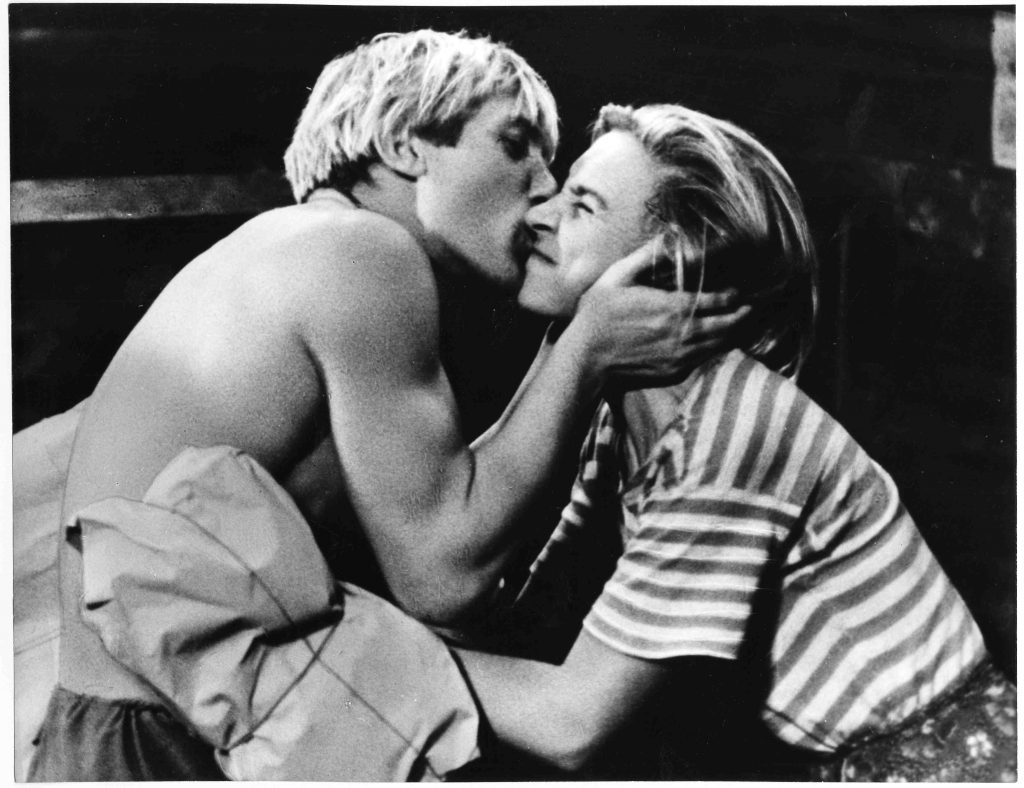
P.H.: Since we are here in the Film Museum I feel obliged to ask about Dziga Vertov. In how far do you think he is a key figure, especially for the second generation of films you are showing? Was that always present or did his influence also disappear for some time?
N.K.: Vertov is maybe not a saint. B.W.: Not like here. [laughter]
N.K.: For me he is a martyr and he can be a saint. He can be the Saint Sebastian of Soviet Cinema. Why not? In terms of his influence on filmmakers we have to know that in Russia we have many different schools of documentary cinema. Vertov is one of the basics, of course. To me it seems like there are two opposed camps. It was Bazin who brought a very strong stand against montage into film theory. This idea that montage is manipulation and propaganda. Of course, Bazin was not so stupid. At the end of his famous article there is a very beautiful line…
P.H.: On the other hand, of course, cinema is also a language.
N.K.: Yes. Yet, this sentence is ignored by many Bazinians. They can say that Eisenstein is guilty, Vertov is guilty and so on. These tendencies are not as strong today as they were twenty years ago. A while ago I talked to a middle aged filmmaker and he had just seen Vertov’s Entuziazm for the first time. It is strange for him to see it so late. He told me: This is music not cinema. Visual music. It is very strange to have this dogma about what cinema is supposed to be.
P.H.: We also shouldn’t forget that Bazin reconsidered a lot of his thoughts. And then there was also Godard…
N.K.: He switched sides three times.
P.H.: Now comes the cheapest question of our interview. You can answer whatever you want, you can also not answer. I want to know which is your favourite combination of the program? One where you think we can discover the most or one you just like for a particular reason?
N.K.: Well, there is so much to discover. To be honest, in the beginning I had a list of 89 films. So there is always more. What is important for me is that you understand how deep the connection between a film and its time can be. Sometimes even the filmmakers don’t know how deeply they are connected with history and how they were formed by the classics. A good example is Uldis Brauns. He was one of the first filmmakers who discovered Vertov. In 1957 I saw his first film on fishermen at the Baltic Sea. It was a Vertovian film. There was a rediscovery taking place. In Latvia you could see this very interesting combination between Soviet Cinema traditions and Scandinavian Cinema. When we look at the double of A Sixth Part of the World by Vertov and 235 000 000 by Brauns there is a conscious connection. A.S.: Sometimes the second film realises hopes which the first film couldn’t realise at all. For example Spring of Life by Vladimir Jurenev deals with certain topics that couldn’t be discussed any further in the 1940s. Yet, The Key That Should Not Be Handed On by Dinara Asanova was able to go further and this is why we paired those two films. N.K.: For me The Tight Knot is a very important film. Michail Švejcer was a pupil of Eisenstein, he admired him a lot and his film deals with a similar topic as The General Line. Nevertheless his film follows a completely different aesthetic. So in this double we have three layers of connections. First, it is a pupil and teacher relationship. Secondly, we have a similar problem in two different decades. The third layer is formal, it deals with comparing the cinematic language. I think this is very interesting.
P.H.: Do you have a favourite, Barbara?
B.W.: Yes, I very much like Aleksandr Mačeret’s Men and Jobs combined with Michail Švejcer and Sof’ja Mil’kina’s Time, Forward!. It is a program of enthusiasm.
P.H.: Since you dealt so much with the concept of utopia in cinema I wanted to ask you in conclusion if you think that utopia in cinema or in Russian cinema is still possible?
N.K.: I don’t know. We live in chaotic times. Russia is full of contradictions today. They are trying to establish new utopias. Yet, they want short-termed utopias. But utopia is a long-term endeavour. You can not create a small utopia. Utopias are big, they are cosmological.
A.S.: From the 1920s to the 1970s there was maybe something like a Golden Age for cinema and its utopias around the world. It doesn’t mean that something like this can’t come again. Right now it is not a golden age, I think. There existed different utopias in different countries during film history.
N.K.: It is very interesting to discuss the concept of utopia in different countries. I have the feeling that the crisis today is connected with the disappearing of utopia. You can not produce a normal film with utopian expectations. The crisis of cinema is somehow connected to the crisis of utopia. If we don’t have cinema today, it is maybe because we don’t have utopias.
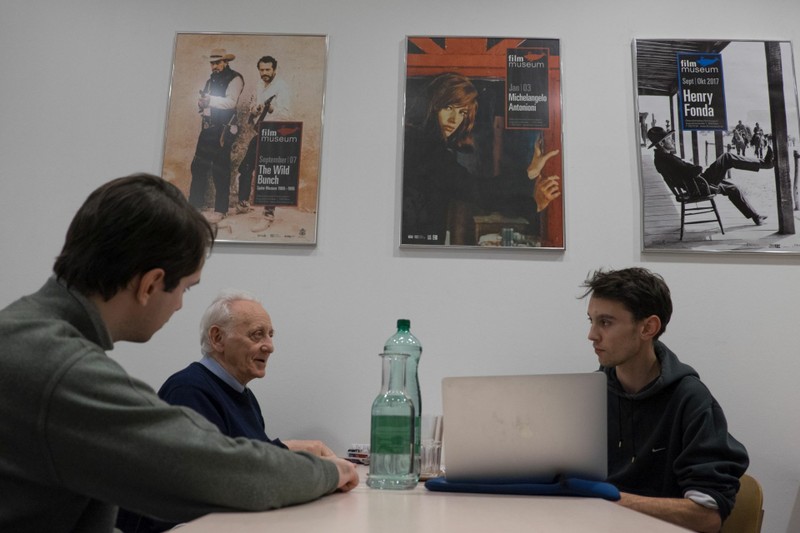
Photo: Austrian Film Museum © Eszter Kondor